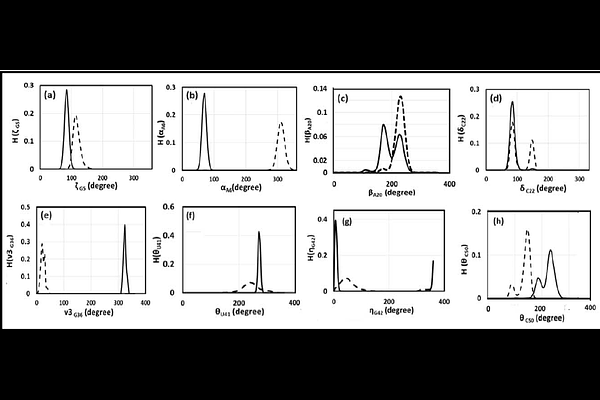In-silico studies on thermodynamics of ligand binding to Fluoride riboswitch aptamer

In-silico studies on thermodynamics of ligand binding to Fluoride riboswitch aptamer
Das, S.
AbstractRiboswitch is a non-coding messenger RNA (m-RNA) whose aptamer domain binds cognate ligands and subsequently undergoes conformational changes in the expression platform leading to the regulation of gene expression. Fluoride riboswitch has immense pharmacological potential due to its presence in some human bacterial pathogens. Several experimental studies shed light on the bacterial defense mechanism of Fluoride riboswitch upon binding of F- cognate ligand in the presence of Mg2+. However, the structural and thermodynamic basis of ligand binding with Fluoride riboswitch aptamer is not well known. This fascinates us for investigating the conformational stability of (i) the holo form of T. Petrophila fluoride riboswitch aptamer (RNA+F-+Mg2++K+) with respect to (ii) the apo form of fluoride riboswitch (RNA in the absence of F- +Mg2++K+). Conformational thermodynamics results derived from molecular dynamics simulation reveal that the holo form of the Fluoride riboswitch aptamer is stabilized by ion recognition site, pseudoknot, and stem1. However, Stem2, Loop1, Loop2, and most of the unpaired bases show significant disorder and destabilization. Molecular docking study validates the thermodynamically destabilized and disordered residues from Loop1 and Stem2 of the Fluoride riboswitch aptamer to serve as putative binding sites for non-cognate ligands. The global health system in the current century faces a serious crisis to counteract bacterial infection due to the severe emergence of bacterial resistance to antibiotics. Consequently, a need for a new generation of antibiotics against resistant bacteria is critically acclaimed. Our work hopefully improves the design of new ligands and aptamers which may be helpful in nucleic acid-targeted therapeutics.